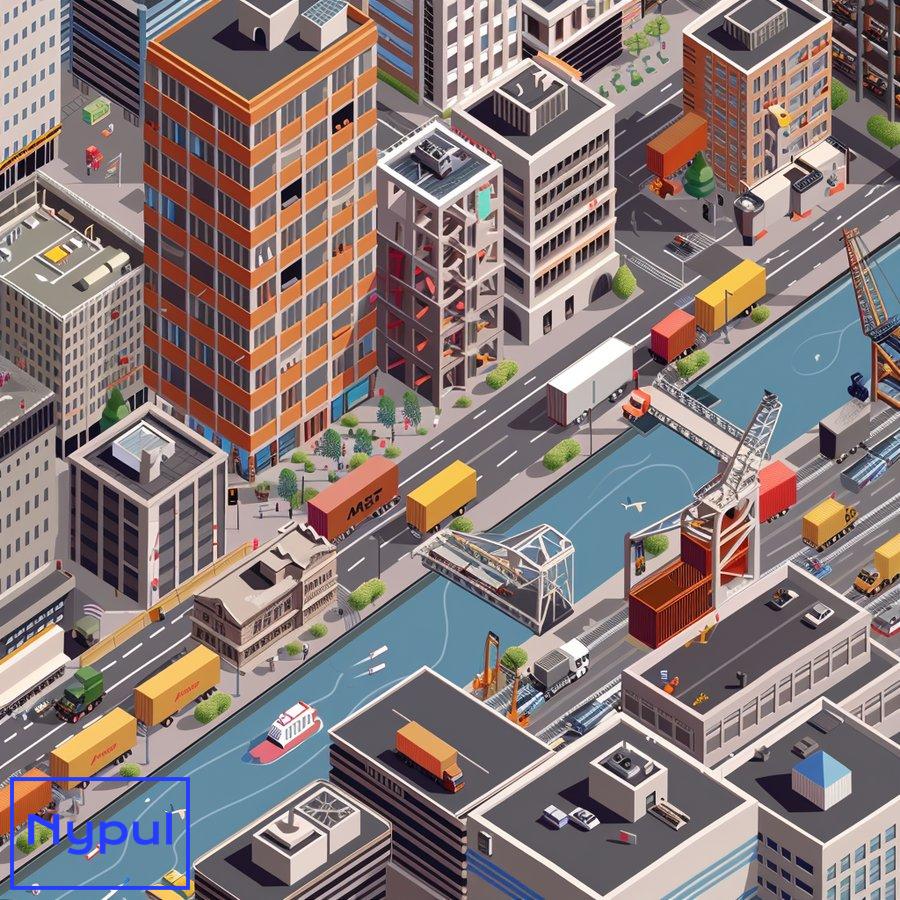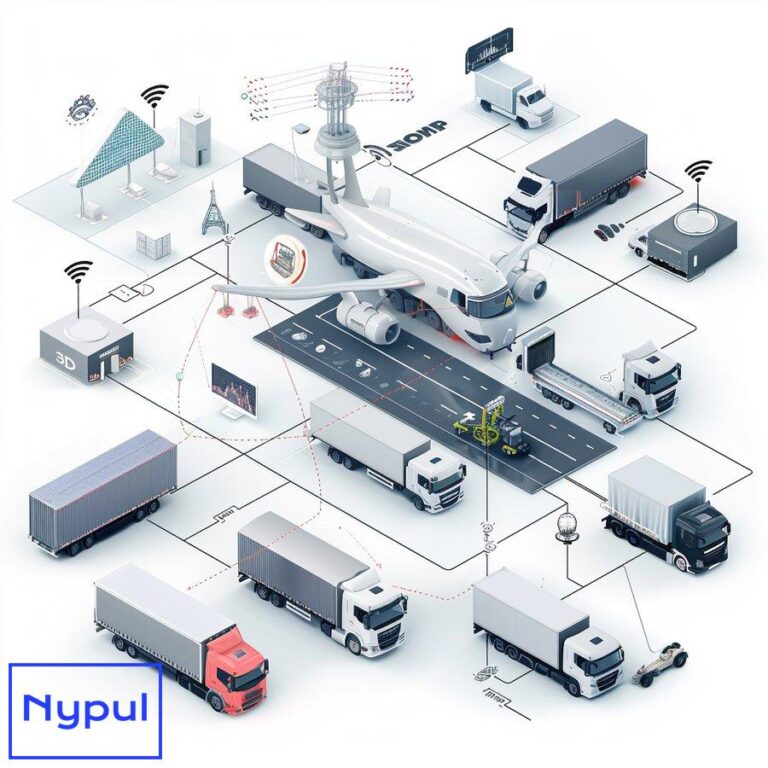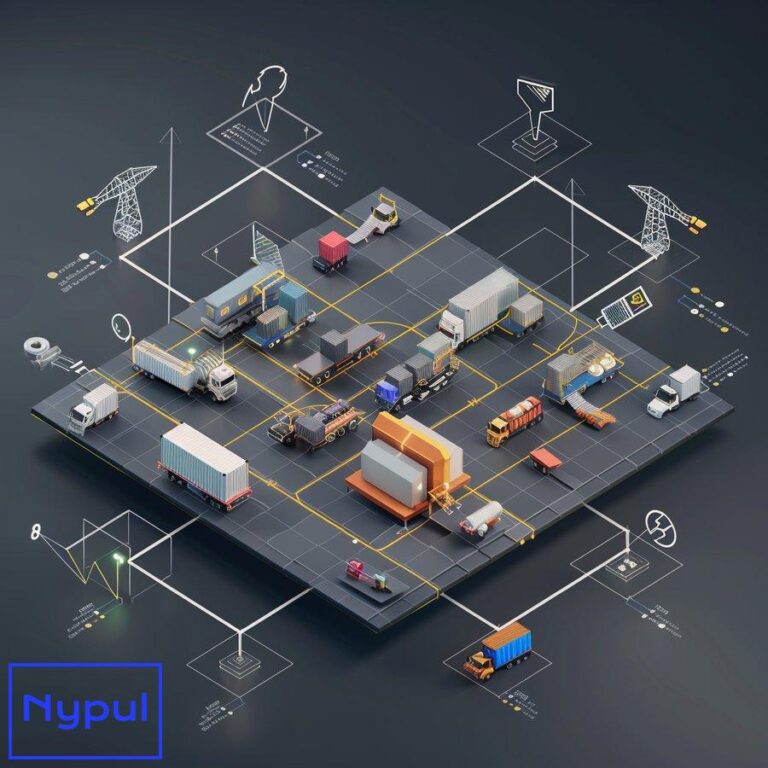What Is the Drayage Industry
How does the drayage industry operate?
The drayage industry serves as a critical link in the global supply chain, facilitating the movement of containerized cargo over short distances. Drayage operations typically involve transporting shipping containers between ports, rail yards, and nearby warehouses or distribution centers.
Drayage companies work closely with ocean carriers, railroads, freight forwarders, and shippers to coordinate the pickup and delivery of containers. When a container arrives at a port or rail terminal, the drayage provider is notified and dispatches a truck to retrieve it. The container is then transported to its next destination, which may be a warehouse for unloading or another transportation hub to continue its journey.
A key aspect of drayage operations is managing the flow of containers to prevent congestion at ports and terminals. Drayage providers must carefully schedule pickups and deliveries to align with vessel arrivals, rail schedules, and warehouse receiving hours. This requires constant communication and coordination between all parties involved.
The drayage process typically follows these steps:
Container arrival and notification: When a container arrives at a port or rail yard, the terminal notifies the drayage company that it is ready for pickup.
Dispatch and pickup: The drayage provider assigns a driver and truck to retrieve the container. The driver proceeds to the terminal, presents the necessary documentation, and picks up the container.
Transportation: The container is transported to its designated destination, which may be a warehouse, distribution center, or another transportation hub.
Delivery and unloading: Upon arrival, the container is delivered and may be unloaded. For import containers, this often occurs at a warehouse. For export containers, it may involve delivering an empty container to be loaded.
Container return: After unloading, empty containers are returned to a designated location, often a container depot or back to the port.
Drayage operations require specialized equipment, including trucks capable of hauling heavy containers and chassis to support them. Drivers must be skilled in maneuvering these large vehicles in congested port and urban areas.
Efficient drayage is crucial for maintaining the flow of goods through ports and preventing bottlenecks in the supply chain. Delays in drayage can lead to congestion at terminals, missed connections with other transportation modes, and increased costs for shippers.
To illustrate the typical drayage process flow, consider this table:
| Step | Action | Responsible Party |
|---|---|---|
| 1 | Container arrives at port/terminal | Ocean carrier/Railroad |
| 2 | Terminal notifies of container availability | Terminal operator |
| 3 | Drayage company schedules pickup | Drayage provider |
| 4 | Driver retrieves container from terminal | Drayage provider |
| 5 | Container transported to destination | Drayage provider |
| 6 | Container delivered/unloaded | Drayage provider/Consignee |
| 7 | Empty container returned | Drayage provider |
This process repeats continuously, with drayage companies managing multiple containers and shipments simultaneously. The ability to efficiently coordinate these movements is essential for success in the drayage industry.
What are the different types of drayage services?
Drayage services come in various forms to meet the diverse needs of shippers and the complexities of intermodal transportation. Understanding these different types helps businesses choose the most appropriate service for their specific requirements. Here are the main categories of drayage services:
Inter-carrier drayage
This type involves moving containers between different transportation carriers within the same region. For example, transferring a container from a rail yard to a trucking company’s terminal. Inter-carrier drayage facilitates smooth transitions between different modes of transport, ensuring cargo continues its journey efficiently.
![]()
Intra-carrier drayage
Intra-carrier drayage refers to the movement of containers between facilities owned by the same carrier. This might involve transporting containers between a carrier’s various terminals or depots within a metropolitan area. Intra-carrier drayage helps carriers optimize their operations and asset utilization.
Expedited drayage
When time is of the essence, expedited drayage services come into play. This option prioritizes speed, often involving dedicated trucks and drivers to move containers as quickly as possible. Expedited drayage is crucial for time-sensitive shipments or when delays have occurred earlier in the supply chain.
Pier drayage
Pier drayage specifically refers to the movement of containers between a port or pier and another nearby location, such as a rail terminal or warehouse. This type of drayage is essential for connecting maritime shipping with inland transportation modes.
Shuttle drayage
Shuttle drayage involves the repeated movement of containers between two fixed points, often over short distances. This service is commonly used to transfer containers between ports and nearby container yards or distribution centers, helping to manage congestion and improve terminal efficiency.
Door-to-door drayage
This comprehensive service covers the entire journey of a container from its origin to its final destination. Door-to-door drayage may involve multiple transportation modes and handling points, with the drayage provider managing the entire process.
Cross-town drayage
Cross-town drayage refers to the transportation of containers between different facilities within the same metropolitan area. This might involve moving containers between rail yards, warehouses, or different shipping terminals.
Bonded drayage
Bonded drayage services are used for international shipments that have not yet cleared customs. These services allow the movement of containers to bonded warehouses or other secure locations where goods can be stored until customs clearance is obtained.
To better understand how these drayage types compare, consider the following table:
| Drayage Type | Primary Use | Typical Distance | Key Benefit |
|---|---|---|---|
| Inter-carrier | Connecting different carriers | Short to medium | Facilitates intermodal transfers |
| Intra-carrier | Internal carrier movements | Short | Optimizes carrier operations |
| Expedited | Time-sensitive shipments | Varies | Fastest possible delivery |
| Pier | Port connections | Very short | Links maritime and inland transport |
| Shuttle | High-volume, fixed routes | Very short | Manages port congestion |
| Door-to-door | Complete container journey | Long | Single provider for entire move |
| Cross-town | Intra-city movements | Short | Connects local facilities |
| Bonded | Pre-customs clearance moves | Varies | Allows secure pre-clearance storage |
Each type of drayage service plays a specific role in the logistics ecosystem. Shippers and logistics providers must carefully consider their needs when selecting the appropriate drayage service. Factors such as shipment urgency, customs status, distance, and the overall supply chain strategy all influence the choice of drayage type.
The diversity of drayage services reflects the complexity of modern supply chains and the need for flexible, tailored solutions. As global trade continues to evolve, drayage providers must adapt their offerings to meet changing market demands and technological advancements.
Who are the key players in the drayage industry?
The drayage industry comprises a diverse ecosystem of companies and stakeholders, each playing a crucial role in the movement of containerized cargo. Understanding these key players helps paint a comprehensive picture of how the industry functions. Here’s an overview of the primary participants in the drayage sector:
![]()
Drayage companies
These are the core service providers in the industry. Drayage companies own and operate trucks specifically designed for hauling shipping containers. They range from small, local operators with a handful of trucks to large national or regional firms with extensive fleets. Drayage companies are responsible for the physical movement of containers between ports, rail yards, and other facilities.
Ocean carriers
While not directly involved in drayage operations, ocean carriers play a significant role in the industry. They are responsible for the long-distance transportation of containers via ships and often have agreements or partnerships with drayage providers to ensure smooth transitions between sea and land transport.
Railroads
Similar to ocean carriers, railroads are key players in the intermodal transportation system. They work closely with drayage companies to coordinate the transfer of containers between rail yards and other locations. Major North American railroads like BNSF, Union Pacific, CSX, and Norfolk Southern are integral to the drayage ecosystem.
Ports and terminal operators
Ports serve as the primary interface between ocean and land transportation. Terminal operators manage the loading, unloading, and temporary storage of containers at ports. They coordinate closely with drayage companies to ensure efficient container pickup and delivery.
Freight forwarders and logistics providers
These companies act as intermediaries, coordinating various aspects of the shipping process, including drayage services. They often have established relationships with multiple drayage providers and can arrange for container transportation as part of a comprehensive logistics solution.
Shippers
Shippers are the customers who require the movement of goods. They may be manufacturers, retailers, or other businesses that need to transport products. While not directly involved in drayage operations, shippers’ needs and requirements drive demand in the industry.
Chassis providers
Chassis are the wheeled trailers used to transport shipping containers. Some drayage companies own their chassis, but many rely on chassis providers who maintain pools of these essential pieces of equipment at ports and rail yards.
Technology providers
As the industry becomes increasingly digitized, technology companies play a growing role. They provide software solutions for tracking containers, optimizing routes, managing documentation, and improving overall operational efficiency.
Regulatory bodies
Government agencies at various levels oversee and regulate the drayage industry. This includes entities like the Federal Motor Carrier Safety Administration (FMCSA) in the United States, which sets safety standards and regulations for commercial trucking.
Industry associations
Organizations like the Intermodal Association of North America (IANA) and the Harbor Trucking Association represent the interests of drayage providers and other stakeholders. They advocate for the industry, provide educational resources, and facilitate collaboration.
To illustrate the relationships between these key players, consider the following table:
| Player | Primary Role | Interacts Closely With |
|---|---|---|
| Drayage companies | Container transportation | Ports, railroads, shippers |
| Ocean carriers | Long-distance sea transport | Ports, drayage companies |
| Railroads | Long-distance land transport | Drayage companies, ports |
| Ports/terminal operators | Container handling and storage | All players |
| Freight forwarders | Logistics coordination | Shippers, drayage companies |
| Shippers | Cargo owners | Freight forwarders, drayage companies |
| Chassis providers | Equipment supply | Drayage companies, ports |
| Technology providers | Software and systems | All players |
| Regulatory bodies | Industry oversight | All players |
| Industry associations | Advocacy and education | All players |
The drayage industry’s effectiveness relies on the seamless coordination and cooperation between these various stakeholders. Each player brings specific expertise and resources to the table, contributing to the overall efficiency of the container transportation system.
As the industry evolves, the roles and relationships between these key players continue to adapt. Technological advancements, changing regulations, and shifts in global trade patterns all influence how these stakeholders interact and operate within the drayage ecosystem.
What equipment and infrastructure are essential for drayage operations?
Drayage operations rely on a specific set of equipment and infrastructure to function effectively. These essential components enable the smooth movement of containers between various transportation hubs and ensure the efficiency and safety of drayage services. Here’s a detailed look at the key equipment and infrastructure required:
Drayage trucks
The backbone of drayage operations, these specialized trucks are designed to haul heavy shipping containers. Drayage trucks typically feature a powerful engine, reinforced frame, and specialized coupling systems to accommodate various container sizes. They must be capable of handling the weight of fully loaded containers, which can exceed 20 tons.

Chassis
A chassis is a wheeled trailer specifically designed to carry shipping containers. It serves as the interface between the container and the truck. Chassis come in various configurations to accommodate different container sizes, including 20-foot, 40-foot, and 45-foot containers. Some chassis are equipped with sliding mechanisms to adjust their length.
Containers
While not owned by drayage companies, containers are a crucial part of the equipment ecosystem. Standard shipping containers, typically 20 or 40 feet in length, are used to transport goods. Specialized containers, such as refrigerated units (reefers) or open-top containers, may also be used depending on the cargo.
Terminal tractors
Also known as yard trucks or hostlers, these vehicles are used within port terminals and large distribution centers to move containers and chassis over short distances. They are designed for maneuverability in tight spaces and quick coupling/uncoupling of trailers.
Container handling equipment
At ports and rail yards, specialized equipment is used to load and unload containers from ships and trains. This includes:
- Gantry cranes: Massive structures used to lift containers on and off ships.
- Reach stackers: Mobile vehicles capable of stacking and retrieving containers in terminal yards.
- Straddle carriers: Tall, narrow vehicles that can lift and transport containers within a terminal.
Information technology systems
Modern drayage operations rely heavily on sophisticated IT systems for:
- Container tracking and tracing
- Route optimization
- Dispatch management
- Electronic documentation handling
- Real-time communication with drivers and customers
Ports and terminals
These serve as the primary hubs for drayage operations. Key infrastructure elements include:
- Docks for ships to berth
- Container yards for temporary storage
- Gate systems for truck entry and exit
- On-site customs facilities
Intermodal rail facilities
These specialized rail yards are equipped to transfer containers between trains and trucks. They feature:
- Rail sidings for train loading/unloading
- Container stacking areas
- Truck lanes for drayage pickup and delivery
Roadway infrastructure
Efficient drayage requires well-maintained roads capable of handling heavy truck traffic. This includes:
- Highways connecting ports to inland destinations
- Dedicated truck routes in urban areas
- Bridges and tunnels rated for container-laden trucks
Maintenance facilities
To keep drayage equipment in good working order, the industry relies on:
- Truck and chassis repair shops
- Tire service centers
- Fueling stations
Container depots
These facilities store empty containers and provide services such as container inspection, cleaning, and repair.
To better understand how these equipment and infrastructure elements relate to different aspects of drayage operations, consider the following table:
| Equipment/Infrastructure | Primary Function | Location | Key Users |
|---|---|---|---|
| Drayage trucks | Container transport | Roads | Drayage companies |
| Chassis | Container support | Ports, rail yards, roads | Drayage companies, chassis providers |
| Containers | Cargo containment | Global circulation | Shippers, ocean carriers |
| Terminal tractors | Short-distance container moves | Ports, large warehouses | Terminal operators |
| Container handling equipment | Loading/unloading | Ports, rail yards | Terminal operators |
| IT systems | Operations management | Company-wide | All stakeholders |
| Ports and terminals | Intermodal transfer hub | Coastal/inland waterways | All stakeholders |
| Intermodal rail facilities | Rail-truck transfer | Strategic inland locations | Railroads, drayage companies |
| Roadway infrastructure | Transportation network | Nationwide | All stakeholders |
| Maintenance facilities | Equipment upkeep | Various locations | Drayage companies, equipment providers |
| Container depots | Empty container management | Near ports/rail yards | Ocean carriers, drayage companies |
The effectiveness of drayage operations depends on the seamless integration of all these equipment and infrastructure elements. Each component plays a vital role in ensuring that containers move efficiently from one mode of transportation to another.
As the drayage industry evolves, so too does the equipment and infrastructure that supports it. Technological advancements, such as the development of electric and autonomous trucks, are beginning to reshape the landscape of drayage operations. Similarly, ports and terminals are investing in more advanced handling equipment and IT systems to improve efficiency and reduce turnaround times.
The ongoing maintenance and upgrading of this essential equipment and infrastructure represent a significant investment for the industry. However, these investments are crucial for maintaining the smooth flow of goods through the global supply chain and meeting the ever-increasing demands of international trade.
How is technology transforming the drayage industry?
Technology is revolutionizing the drayage industry, enhancing efficiency, transparency, and overall performance. The integration of advanced technological solutions is addressing long-standing challenges and opening new opportunities for improvement. Here’s an in-depth look at how technology is transforming various aspects of drayage operations:
GPS tracking and real-time visibility
GPS technology enables real-time tracking of trucks and containers, providing accurate location data and estimated arrival times. This enhanced visibility allows for:
- Better coordination between drayage providers, terminals, and customers
- Proactive management of potential delays or issues
- Improved planning and resource allocation
Transportation Management Systems (TMS)
Specialized TMS platforms for drayage operations offer comprehensive tools for:
- Automated dispatch and routing
- Load planning and optimization
- Electronic documentation management
- Performance analytics and reporting
These systems streamline operations, reduce manual errors, and provide valuable insightsfor decision-making.
Mobile applications
Mobile technology is enhancing communication and efficiency in drayage operations. Drivers can use mobile apps for:
- Real-time updates on load assignments
- Navigation assistance to optimize routes
- Electronic proof of delivery (POD) documentation
These applications help reduce paperwork and improve the speed at which information is shared across the supply chain.
Automated systems and robotics
Automation is beginning to play a role in drayage operations, particularly in port and terminal environments. Technologies such as:
- Automated guided vehicles (AGVs) for container handling
- Robotics for loading and unloading containers
These innovations can increase operational efficiency, reduce labor costs, and minimize human error.
Data analytics
The use of big data analytics allows drayage companies to analyze performance metrics, identify trends, and make data-driven decisions. Key applications include:
- Predictive analytics to forecast demand and optimize fleet utilization
- Performance benchmarking against industry standards
- Identifying inefficiencies in operations to implement corrective actions
By leveraging data analytics, companies can enhance their operational strategies and improve service delivery.
Electronic logging devices (ELDs)
Regulatory compliance is critical in the drayage industry. ELDs are used to track driver hours of service, ensuring compliance with federal regulations. This technology helps:
- Reduce violations related to hours-of-service regulations
- Improve driver safety by preventing fatigue
- Streamline reporting processes for regulatory audits
Blockchain technology
Blockchain offers potential solutions for enhancing transparency and security in the drayage industry. Key benefits include:
- Immutable records of transactions and movements, reducing disputes
- Improved traceability of cargo throughout the supply chain
- Enhanced security against fraud and theft
As blockchain technology matures, its application in logistics and drayage could lead to more secure and efficient operations.
Sustainability technologies
With increasing pressure to reduce environmental impact, the drayage industry is exploring sustainable technologies. This includes:
- Electric trucks that reduce emissions and fuel costs
- Alternative fuels such as hydrogen or biofuels
- Route optimization software that minimizes fuel consumption
Investing in sustainable technologies not only addresses regulatory requirements but also enhances corporate responsibility.
To summarize how technology is reshaping the drayage industry, consider the following table:
| Technology | Application | Benefits |
|---|---|---|
| GPS tracking | Real-time visibility | Enhanced coordination, proactive issue management |
| TMS | Operations management | Streamlined processes, performance insights |
| Mobile apps | Driver communication | Reduced paperwork, improved efficiency |
| Automation/robotics | Container handling | Increased efficiency, reduced labor costs |
| Data analytics | Performance analysis | Data-driven decision-making, trend identification |
| ELDs | Regulatory compliance | Improved safety, streamlined reporting |
| Blockchain | Transaction security | Enhanced transparency, reduced disputes |
| Sustainability tech | Emission reduction | Environmental responsibility, cost savings |
The integration of these technologies is not only transforming how drayage companies operate but also setting new standards for efficiency and service quality in the logistics sector. As technology continues to evolve, it will be essential for stakeholders in the drayage industry to stay informed about emerging trends and innovations.
What are the major challenges facing drayage providers?
Despite its critical role in global supply chains, the drayage industry faces several significant challenges that can impact efficiency and profitability. Understanding these challenges is essential for stakeholders looking to navigate the complexities of drayage operations effectively. Here are some of the major issues confronting drayage providers:
Port congestion
One of the most pressing challenges is congestion at ports and terminals. High volumes of container traffic can lead to delays in loading and unloading operations. Congestion results from factors such as:
- Increased shipping volumes due to global trade growth
- Inefficient terminal operations
- Limited infrastructure capacity
These delays can ripple through the supply chain, causing increased costs for shippers and reduced reliability for customers.
Driver shortages
The trucking industry as a whole is experiencing a shortage of qualified drivers. Factors contributing to this issue include:
- Aging workforce with many drivers nearing retirement age
- Low wages relative to job demands
- Long hours and time away from home
The driver shortage impacts drayage providers’ ability to meet demand and maintain service levels.
Regulatory compliance
Drayage providers must navigate a complex landscape of regulations at local, state, and federal levels. Key compliance challenges include:
- Hours-of-service regulations that limit driving time
- Environmental regulations aimed at reducing emissions
- Safety regulations governing vehicle maintenance and driver qualifications
Maintaining compliance requires significant administrative effort and resources.
Rising operational costs
Drayage providers face increasing operational costs driven by several factors:
- Fuel price volatility affecting transportation expenses
- Rising insurance premiums due to accident rates
- Maintenance costs for aging fleets
These rising costs can erode profit margins unless effectively managed.
Technology adoption
While technology offers numerous benefits, adopting new systems can be challenging for many drayage providers. Common hurdles include:
- High upfront investment costs for new technologies
- Resistance to change among staff accustomed to traditional practices
- The need for training on new systems or equipment
Overcoming these barriers is essential for leveraging technology’s full potential.
Supply chain disruptions
Global events such as natural disasters, pandemics, or geopolitical tensions can disrupt supply chains significantly. Drayage providers must be prepared to respond quickly to these disruptions by:
- Adjusting routes or schedules
- Coordinating with other transportation modes
- Communicating effectively with customers about delays
Being agile in response to disruptions is crucial for maintaining customer satisfaction.
Infrastructure limitations
Inadequate infrastructure poses challenges for efficient drayage operations. Issues include:
- Poorly maintained roads leading to increased wear on vehicles
- Insufficient parking facilities at ports or terminals
- Delays caused by construction or road closures
Investments in infrastructure improvements are necessary to support efficient drayage operations.
To summarize these challenges facing drayage providers, consider the following table:
| Challenge | Description | Impact |
|---|---|---|
| Port congestion | Delays due to high traffic volumes | Increased costs, reduced reliability |
| Driver shortages | Lack of qualified drivers available | Inability to meet demand |
| Regulatory compliance | Complex regulations at various levels | Administrative burden, risk of penalties |
| Rising operational costs | Increased expenses from fuel, insurance, maintenance | Erosion of profit margins |
| Technology adoption | Challenges in implementing new systems | Hurdles in realizing efficiency gains |
| Supply chain disruptions | Global events affecting logistics flow | Need for agile responses |
| Infrastructure limitations | Poor road conditions and inadequate facilities | Delays and inefficiencies |
Addressing these challenges requires collaboration among stakeholders across the supply chain. By working together—sharing information, investing in infrastructure improvements, and advocating for policy changes—drayage providers can enhance their resilience against these obstacles.
How do regulations impact the drayage industry?
Regulations play a vital role in shaping the operational landscape of the drayage industry. They establish standards that govern safety, environmental practices, labor relations, and more. Understanding how these regulations impact operations helps stakeholders navigate compliance effectively while maintaining efficiency. Here’s an overview of key regulatory areas affecting the drayage sector:
Safety regulations
Safety is paramount in the trucking industry. Regulations set forth by agencies such as the Federal Motor Carrier Safety Administration (FMCSA) establish standards for:
- Vehicle maintenance requirements
- Driver qualifications (e.g., licensing standards)
- Hours-of-service limits that govern driving time
Compliance with safety regulations helps reduce accidents on roads but requires ongoing training and monitoring efforts from drayage companies.
Environmental regulations
As concerns about climate change grow, environmental regulations increasingly impact the trucking sector. Key areas include:
- Emission standards governing pollutants from diesel engines
- Requirements for adopting cleaner technologies (e.g., electric trucks)
While these regulations aim to reduce environmental impact, they may also impose additional compliance costs on operators.
Labor laws
Labor regulations influence various aspects of employment within the drayage sector. Important considerations include:
- Wage laws that govern minimum pay rates
- Overtime rules affecting driver compensation
Compliance with labor laws ensures fair treatment of workers but may also increase operational costs if wage rates rise.
Customs and trade regulations
For international shipments involving cross-border transport, customs regulations play a crucial role. Drayage providers must comply with:
- Customs clearance procedures
- Documentation requirements for international shipments
Navigating customs regulations requires coordination with customs brokers and freight forwarders.
Local ordinances
In addition to federal regulations, local governments may impose specific rules affecting trucking operations within their jurisdictions. Examples include:
- Restrictions on truck routes or operating hours
- Zoning laws regulating where trucks can park or operate
Local ordinances can create additional complexities that require careful planning by drayage providers.
To illustrate how these regulatory areas impact different aspects of drayage operations, consider this table:
| Regulatory Area | Key Focus | Impact on Operations |
|---|---|---|
| Safety regulations | Vehicle maintenance & driver qualifications | Compliance efforts; training needs |
| Environmental regulations | Emission standards & cleaner technologies | Increased compliance costs; investment in new tech |
| Labor laws | Wage rates & overtime rules | Higher operational costs; workforce management challenges |
| Customs/trade regulations | Customs clearance & documentation | Coordination with brokers; potential delays |
| Local ordinances | Truck routes & zoning laws | Route planning; parking constraints |
Navigating this complex regulatory landscape requires vigilance from all stakeholders involved in drayage operations. Companies must invest time and resources into understanding applicable laws while ensuring compliance without compromising efficiency.
As regulatory frameworks continue evolving—especially concerning safety standards and environmental initiatives—drayage providers must remain proactive in adapting their practices accordingly.
What is the economic significance of the drayage sector?

The economic significance of the drayage sector cannot be overstated; it plays a crucial role in facilitating trade both domestically and internationally. Understanding this significance involves examining its contributions across various dimensions within the broader economy. Here are some key aspects highlighting the economic importance of the drayage industry:
Facilitating trade
Drayage services are integral to moving goods between ports or rail yards and their final destinations. This connectivity enables businesses—ranging from manufacturers to retailers—to access global markets efficiently.
By ensuring timely transportation of containers through intermodal connections (e.g., between ships/trains/trucks), the drayage sector supports international trade flows vital for economic growth.
Job creation
The drayage industry provides employment opportunities across multiple roles including drivers, dispatchers, mechanics—and indirectly supports jobs within related sectors such as logistics management or equipment manufacturing.
Accordingly—the sector contributes significantly toward local economies by generating income through wages while stimulating demand for goods/services provided by other businesses operating nearby (e.g., restaurants/fuel stations).
Supporting supply chains
Drayage serves as a critical link within complex supply chains involving multiple transportation modes (ocean/rail/truck). Efficient movement through this link reduces overall transit times while minimizing inventory holding costs—ultimately enhancing competitiveness among businesses engaged in global commerce.
A well-functioning drayage sector ensures that products reach consumers promptly—which positively impacts customer satisfaction levels across industries ranging from retail/e-commerce sectors down through food distribution networks.
Revenue generation
Drayage companies generate revenue through fees charged per container moved—contributing directly toward local/state economies via taxation mechanisms established around business activities within those jurisdictions (e.g., sales tax).
Additionally—the growth potential associated with increasing container volumes translates into higher revenues generated per operation performed—benefiting both individual firms operating within this space as well as broader economic ecosystems reliant upon robust logistics infrastructures functioning effectively over time periods extending into years ahead.
To illustrate how these economic contributions manifest across different dimensions related specifically back toward overall economic significance associated directly tied back toward successful operation outcomes derived from effective management strategies employed throughout various stages—from initial planning through execution phases—consider this table summarizing key contributions made by each aspect outlined above:
| Economic Contribution | Description |
|---|---|
| Facilitating trade | Enables efficient movement between ports/rail yards; supports global commerce |
| Job creation | Provides employment opportunities across various roles; stimulates local economies |
| Supporting supply chains | Enhances competitiveness among businesses; reduces transit times/inventory holding costs |
| Revenue generation | Generates income through fees/taxes; contributes directly toward local/state economies |
The economic significance of the drayage sector extends beyond mere transportation services—it encompasses vital contributions toward facilitating trade flows while simultaneously supporting job creation/revenue generation efforts across diverse industries reliant upon effective logistical frameworks operating seamlessly over time periods extending into years ahead!
As global trade continues evolving amid changing market dynamics influenced by technological advancements/regulatory shifts—understanding these economic implications becomes increasingly important not just within logistics circles but also among policymakers seeking strategies aimed at fostering sustainable growth opportunities benefiting all stakeholders involved throughout this intricate ecosystem!






